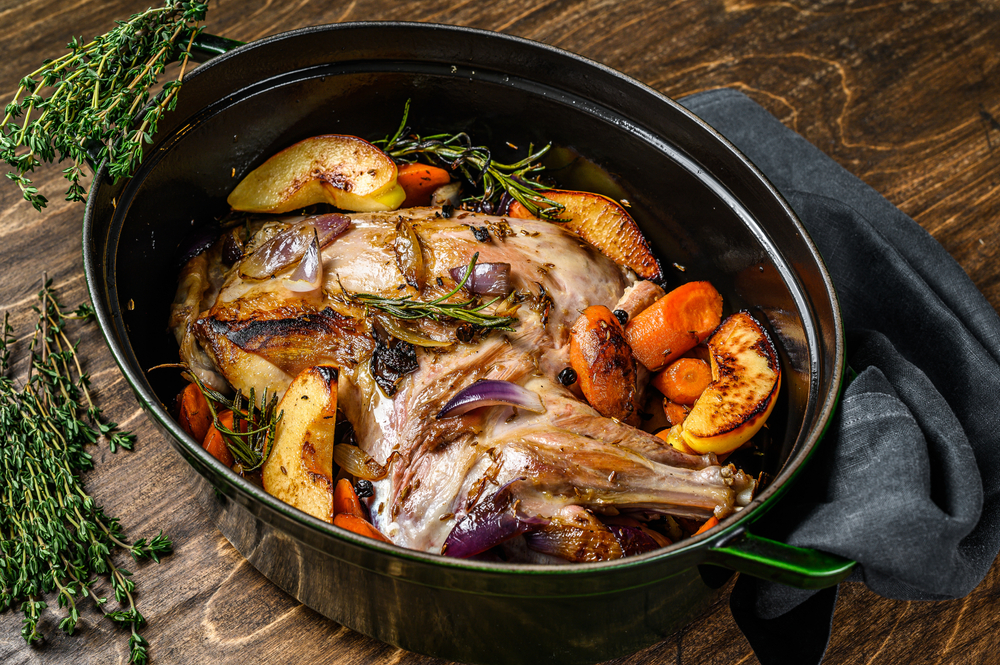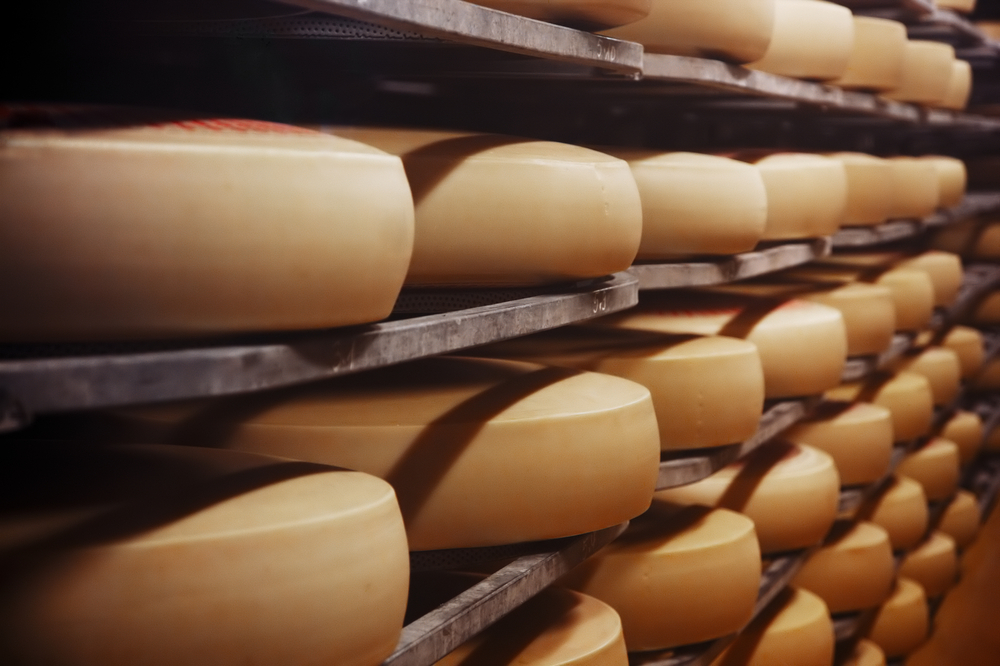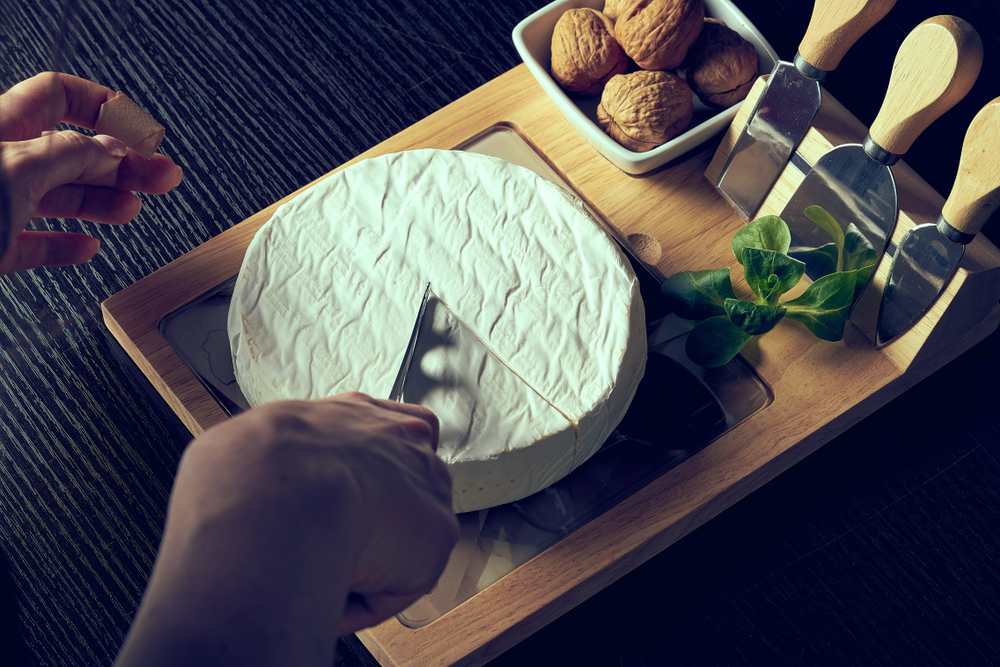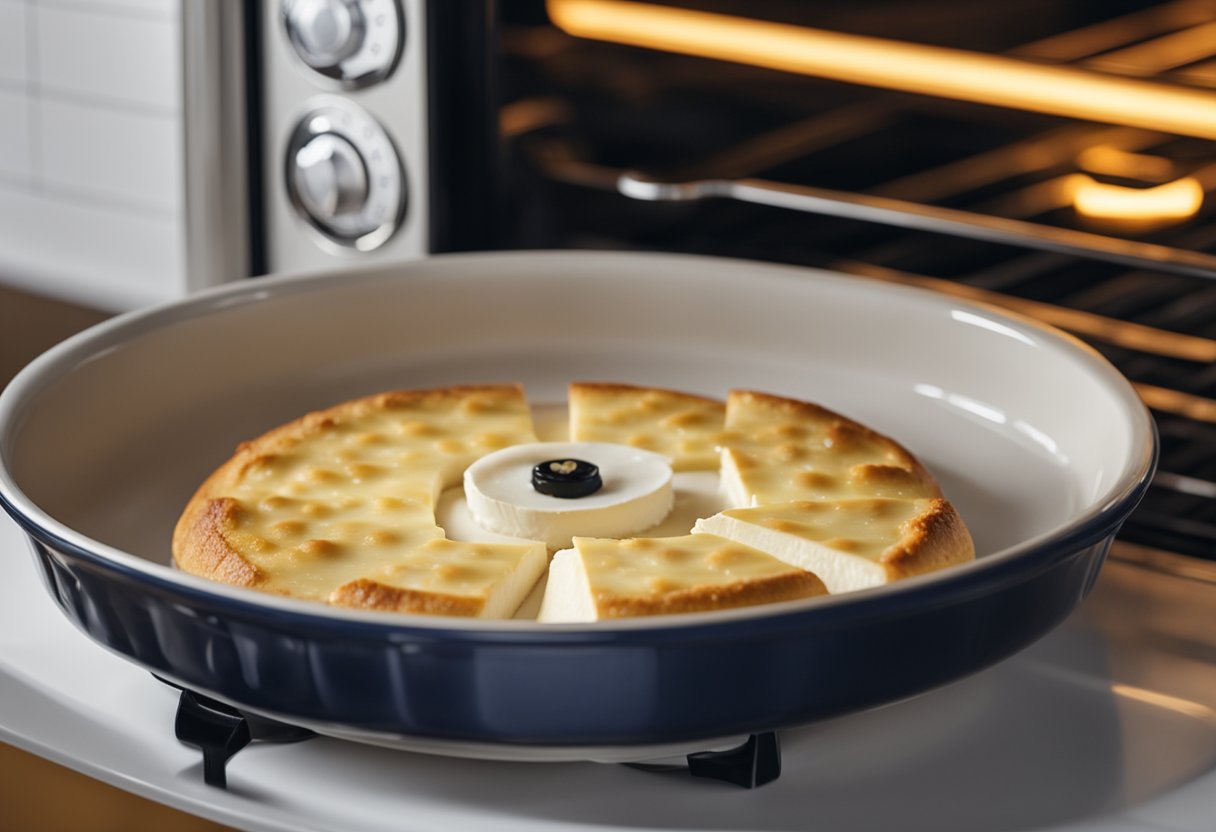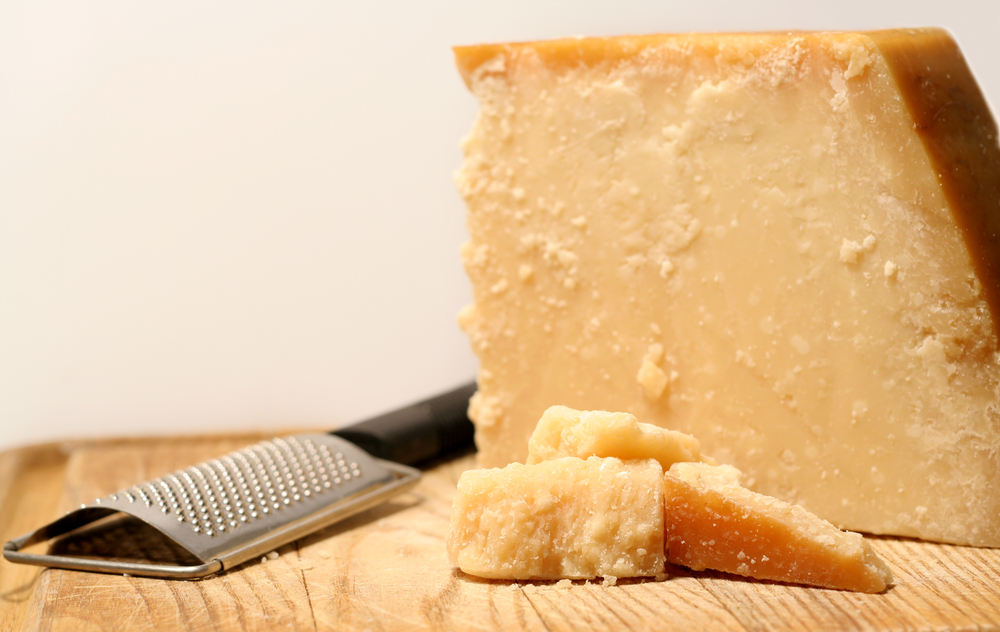I am often asked, “What does brie taste like?” and honestly, it’s a difficult question to answer. Brie is a type of cheese that has a unique taste and texture.
It’s a soft, creamy, buttery cheese with a subtle earthy undertone that becomes more prominent as it ages. The flavor profile of brie is complex, and it can be difficult to describe in words.
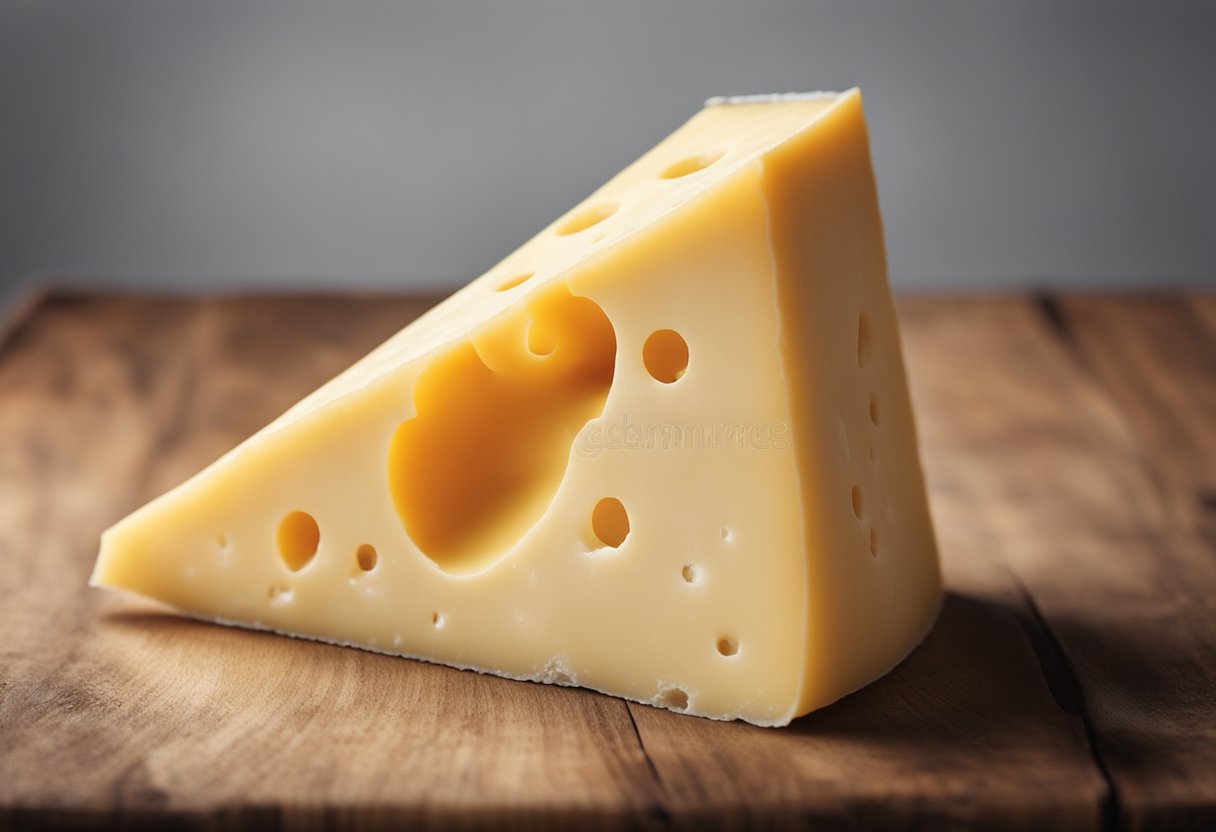
Brie is a French cheese that has been enjoyed for centuries. It is traditionally made from cow’s milk, but it can also be made from goat’s milk.
The cheese has a soft, bloomy rind of white mold, and a creamy interior. When served at room temperature, brie has a butter-like consistency that makes it easy to spread on crackers or bread.
Key Takeaways
- Brie is a French cheese with a soft, creamy, buttery texture and a subtle earthy undertone.
- It is traditionally made from cow’s milk, but it can also be made from goat’s milk.
- Brie is a versatile cheese that can be enjoyed on its own or paired with a variety of foods and wines.
What is Brie
Brie is a soft, creamy, and mild cheese that originated in France. It is a type of French cheese that has been around since the Middle Ages.
Brie is made from cow’s milk and is known for its white rind, which is edible and adds a slightly mushroomy flavor to the cheese.
Brie comes in different varieties, including Brie de Meaux and Brie de Melun, which are named after the regions where they are produced.
Brie de Meaux is considered the best and most authentic type of Brie. It is made in the town of Meaux, located in the Brie region, which is just east of Paris.
Brie is a good source of calcium and protein, but it is also high in calories and sodium. It is made using rennet, which is an enzyme that helps coagulate the milk and form the cheese curds.
Overall, Brie is a delicious and versatile cheese that can be enjoyed on its own, with crackers or bread, or as an ingredient in various dishes.
Its mild flavor and creamy texture make it a popular choice for cheese boards and appetizers.
Origins of Brie
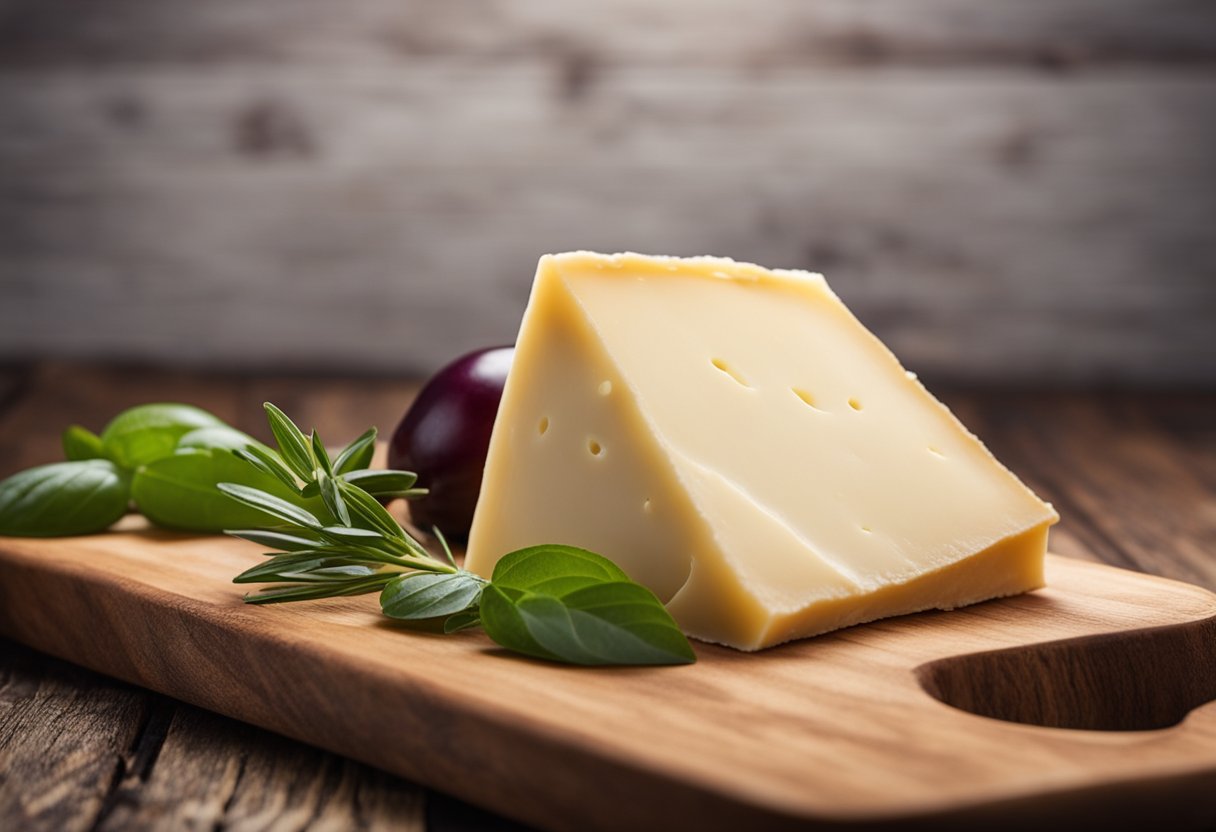
Brie is a type of soft cheese that originated in France. It is named after the Brie region, which is located in the Île-de-France region of France. The region is known for its fertile soil, which is ideal for dairy farming.
The exact origins of Brie are unclear, but it is believed to have been created during the Middle Ages. During this time, cheese making was a common practice in France, and many different types of cheese were created.
Brie was one of the cheeses that emerged during this time, and it quickly became popular throughout France.
Brie is made from cow’s milk and has a soft, creamy texture. The cheese is aged for several weeks, during which time it develops a white rind.
The rind is edible and has a slightly nutty flavor. The cheese itself has a mild, buttery flavor that is often described as earthy.
Today, Brie is enjoyed all over the world and is often used in a variety of dishes, including sandwiches, salads, and appetizers. It is also commonly served as a dessert cheese, and pairs well with fruit and wine.
Overall, the origins of Brie are rooted in the rich dairy farming traditions of France.
The cheese has a long and storied history, and its popularity continues to grow as more people discover its delicious flavor and versatility.
Texture and Appearance
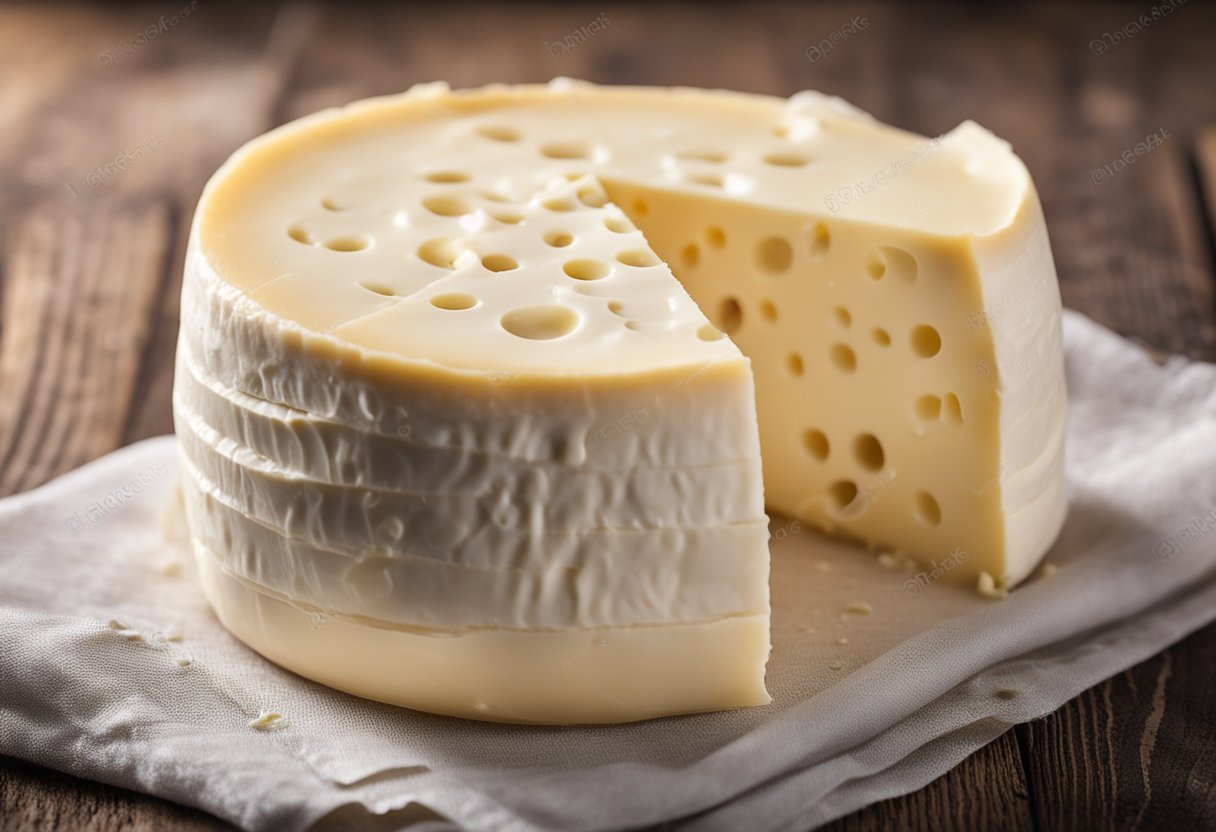
Brie cheese has a soft and creamy texture that is unlike any other cheese. It is a soft-ripened cheese that is made from cow’s milk and has a smooth texture.
The cheese is usually sold in a wheel shape and has a white rind that is edible. The rind is usually soft and velvety to the touch.
When you cut into a wheel of brie cheese, you will notice that the texture is creamy and smooth. The cheese has a soft and spreadable consistency that is ideal for spreading on crackers or bread.
The texture of the cheese is what makes it so popular among cheese lovers.
The appearance of brie cheese is also unique. The cheese has a pale yellow color with a white rind. The rind is usually covered in a layer of white mold that is edible. The mold is what gives the cheese its distinctive flavor and aroma.
In conclusion, brie cheese has a soft and creamy texture that is perfect for spreading on crackers or bread. The appearance of the cheese is also unique with its white rind and pale yellow color.
If you are a cheese lover, then you should definitely try brie cheese at least once in your life.
Taste Profile
Brie cheese has a delicious and unique flavor profile that makes it a popular choice among cheese lovers. The taste of brie can vary depending on how long it has been aged.
Younger brie cheeses have a milder flavor, while older ones have a stronger, more pungent flavor.
Brie cheese has a buttery and creamy taste that is complemented by a slightly tangy and sour flavor. It has a mild flavor that is not overpowering, making it a versatile cheese that can be paired with a variety of foods.
The flavor of brie cheese is often described as sweet and nutty, with a hint of earthiness.
The texture of brie cheese is also an important part of its taste profile. It is soft and creamy, with a velvety texture that melts in your mouth.
The rind of the cheese adds a slightly chewy texture that is also edible and adds to the overall flavor experience.
When paired with other foods and beverages, brie cheese can enhance the flavor experience. It pairs well with fruits like grapes, apples, and pears, as well as nuts like walnuts and almonds.
Brie cheese also goes well with crackers, bread, and other baked goods.
Overall, the taste of brie cheese is rich, buttery, and slightly tangy. It has a mild flavor that is not overpowering, making it a versatile cheese that can be used in a variety of dishes.
Serving Suggestions
When it comes to serving brie, there are many options to choose from. Here are some of my favorite serving suggestions:
Room Temperature
Brie tastes best when served at room temperature. Take the cheese out of the fridge at least an hour before serving to allow it to come to room temperature. This will bring out the full flavor and texture of the cheese.
Crackers and Bread
Brie pairs well with a variety of crackers and bread. Choose a crusty baguette or some water crackers to serve alongside the cheese. You can also try serving brie with some sliced bread or toast points.
Fruit
Fruit is a great accompaniment to brie. Try serving the cheese with some sliced apples, pears, or grapes. The sweetness of the fruit pairs well with the creamy, slightly nutty flavor of the cheese.
Cheese Board
Brie is a popular choice for cheese boards. Serve the cheese on a large platter with some other cheeses, such as cheddar or gouda, and some cured meats. Add some crackers, bread, and fruit to complete the board.
Nuts
Nuts are another great pairing with brie. Try serving the cheese with some walnuts, almonds, or pecans. The crunchiness of the nuts pairs well with the creamy texture of the cheese.
Slices
When serving brie, it’s important to slice it properly. Use a sharp knife to cut the cheese into thin slices. This will make it easier to eat and will also help to showcase the texture of the cheese.
Parchment Paper
To add a touch of elegance to your brie presentation, try serving it on a sheet of parchment paper. This will give your guests something to unwrap and will also help to keep the cheese from sticking to the platter.
Overall, brie is a versatile cheese that can be served in many different ways. Try experimenting with different serving suggestions to find your favorite combination.
Pairing Brie with Food and Wine
When it comes to pairing brie with food and wine, there are plenty of options to choose from.
Brie is a versatile cheese that can be paired with a variety of foods, including fruits, bread, crackers, nuts, apples, pears, mushrooms, and grapes.
One classic pairing for brie is with a crisp white wine, such as a Sauvignon Blanc or Chardonnay. The acidity and fruitiness of the wine complement the creaminess and mild flavor of the cheese.
For those who prefer red wine, a light-bodied Pinot Noir or Beaujolais can also pair well with brie.
In addition to wine, brie can also be paired with a variety of fruits, such as strawberries, figs, and grapes. These fruits provide a sweet and tangy contrast to the mild flavor of the cheese.
Brie also pairs well with bread and crackers, providing a crunchy texture to complement the softness of the cheese.
For a more savory pairing, brie can be paired with mushrooms or served in a soup. The earthy flavor of the mushrooms complements the mild flavor of the cheese, while the creaminess of the soup provides a rich and satisfying meal.
Overall, brie is a versatile cheese that can be paired with a variety of foods and wines. Whether you prefer sweet or savory pairings, there is sure to be a combination that will satisfy your taste buds.
Brie in Cooking
Brie cheese is a versatile ingredient that can be used in various dishes. Its mild and creamy flavor makes it a perfect addition to many recipes. Here are some ways to use brie in cooking:
Recipes
Brie can be used in many recipes, from appetizers to desserts. It is a popular ingredient in French cuisine, and it pairs well with fruits, nuts, and bread.
Some popular brie recipes include brie and apple tart, brie and mushroom quiche, and brie and cranberry crostini.
Baked Brie
Baked brie is a popular appetizer that is perfect for parties and gatherings.
To make baked brie, simply place a wheel of brie on a baking sheet, top it with your favorite toppings, such as honey, nuts, or jam, and bake it in the oven until it is melted and bubbly. Serve it with crusty bread or crackers.
Soups and Sauces
Brie can be used to add creaminess and flavor to soups and sauces. It can be added to creamy soups, such as potato soup or broccoli soup, to make them even more delicious.
Brie can also be used to make a creamy cheese sauce for pasta or vegetables.
Dishes
Brie can be used in many dishes, from breakfast to dinner. It can be added to omelets, quiches, and frittatas for a creamy and delicious breakfast.
Brie can also be used in sandwiches, burgers, and pizzas for a flavorful twist.
Serving Brie
When serving brie, it is important to let it come to room temperature before serving. This will allow the cheese to soften and become more flavorful.
Brie can be served on a cheese board with fruits, nuts, and crackers, or it can be served with bread and honey for a simple and delicious appetizer.
Overall, brie is a versatile ingredient that can be used in many recipes. Its mild and creamy flavor makes it a perfect addition to many dishes, from appetizers to desserts.
Types of Brie
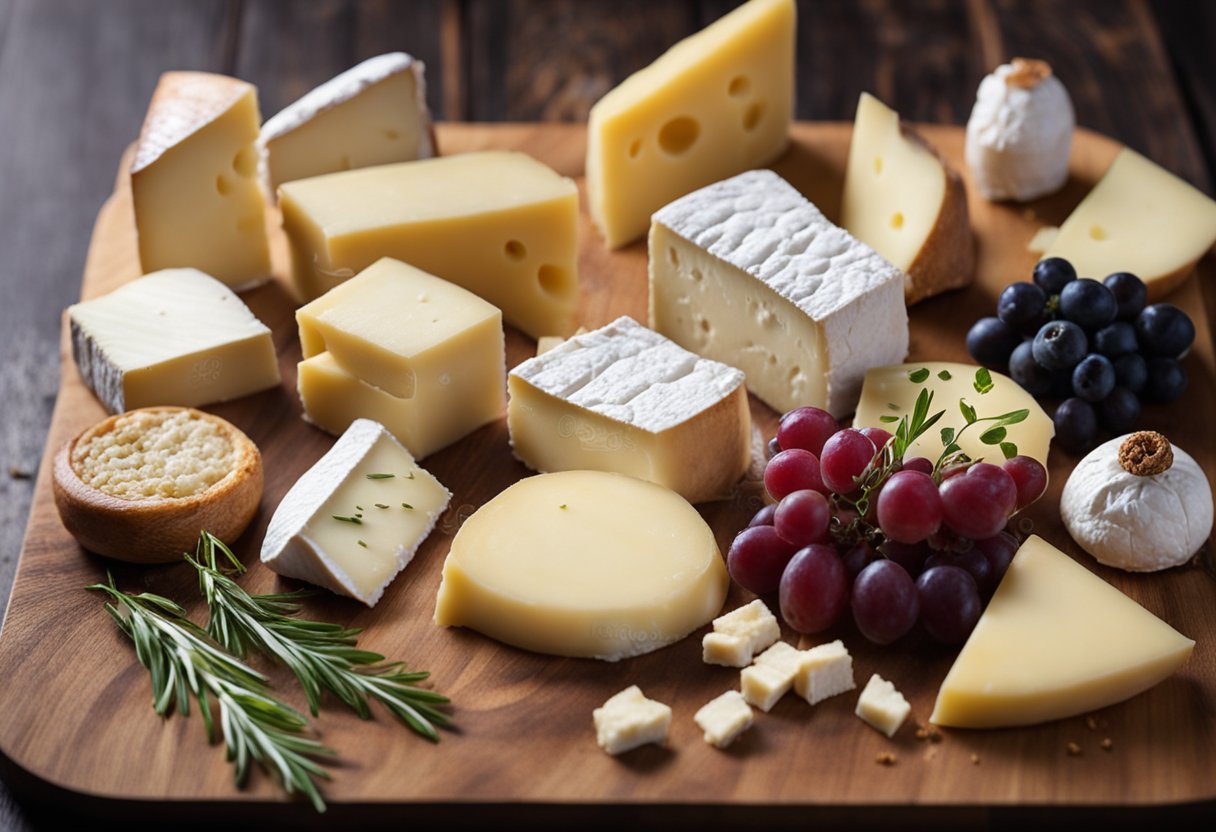
Brie is a soft cheese that originated in France and is now popular all over the world. There are different types of brie cheese, each with its own unique taste, texture, and characteristics.
In this section, I will discuss some of the most popular types of brie cheese.
Brie de Meaux
Brie de Meaux is a type of brie cheese that is made from raw cow’s milk. It is named after the town of Meaux, which is located in the Brie region of France.
Brie de Meaux has a creamy texture and a rich, buttery flavor. It is often described as the king of brie cheese due to its high quality and rich flavor. Brie de Meaux has a white rind and a pale yellow interior.
Brie de Melun
Brie de Melun is another type of brie cheese that is made from raw cow’s milk. It is named after the town of Melun, which is located in the Brie region of France.
Brie de Melun has a stronger flavor than Brie de Meaux and a firmer texture. It has a reddish-brown rind and a pale yellow interior.
Triple Creme Brie
Triple creme brie is a type of brie cheese that has a higher fat content than regular brie cheese. It is made by adding extra cream to the cheese during the production process.
Triple creme brie has a rich, creamy texture and a buttery flavor. It is often served as a dessert cheese and pairs well with fruit and sweet wines.
Other Types of Brie
There are other types of brie cheese available, including double creme brie, which is made by adding extra cream to the cheese, and flavored brie, which is infused with herbs, spices, or other flavors.
Some brie cheese is also made from goat’s milk, which gives it a tangy flavor.
In conclusion, brie cheese is a versatile and delicious cheese that comes in many different types and flavors.
Whether you prefer a mild, buttery flavor or a stronger, more complex taste, there is a brie cheese out there that will suit your palate.
Storing and Shelf Life
As a cheese lover, I always make sure to store my Brie cheese properly to maintain its quality and prevent spoilage.
Brie cheese is a soft cheese that requires refrigeration to stay fresh. If left at room temperature for too long, it can spoil and become unsafe to eat.
When storing Brie cheese in the refrigerator, it is best to keep it in its original packaging or wrap it tightly with plastic wrap to prevent it from drying out.
It is also important to keep the cheese away from strong-smelling foods to prevent it from absorbing any unwanted flavors.
The shelf life of Brie cheese varies depending on whether it is opened or unopened. Unopened Brie cheese can last for up to four weeks in the refrigerator, while opened Brie cheese should be consumed within a week for optimal quality.
It is important to check the expiration date on the packaging and consume the cheese before it goes bad.
If you have leftover Brie cheese, you can also freeze it for later use. Wrap the cheese tightly in plastic wrap and place it in an airtight container before placing it in the freezer.
Frozen Brie cheese can last for up to six months, but it may lose some of its texture and flavor after being frozen.
In summary, to maintain the quality and freshness of Brie cheese, it is important to store it properly in the refrigerator and consume it before it goes bad.
By following these simple tips, you can enjoy the delicious taste of Brie cheese for weeks to come.
Brie Vs. Other Cheeses
When it comes to cheese, there are so many varieties to choose from. Brie is a popular cheese that many people enjoy, but how does it compare to other types of cheese?
Let’s take a look at some of the most popular cheeses and see how they stack up against brie.
Camembert
Camembert is often compared to brie, as they are both soft, creamy cheeses with a bloomy rind. However, camembert tends to have a stronger flavor and aroma than brie.
While brie has a mild, buttery taste, camembert is more pungent and earthy.
Gruyere Cheese
Gruyere is a hard, aged cheese that is often used in cooking. It has a nutty, slightly sweet flavor and a firm texture.
While brie is a soft cheese that is best enjoyed on its own or with crackers, gruyere is a versatile cheese that can be used in a variety of dishes.
Goat Cheese
Goat cheese, also known as chèvre, is a tangy, creamy cheese that is made from goat’s milk. It has a distinct flavor that is both sweet and slightly sour.
While brie is a mild cheese, goat cheese is more flavorful and can be used in a variety of dishes, from salads to pizzas.
Feta Cheese
Feta is a crumbly cheese that is often used in Greek cuisine. It has a salty, tangy flavor and a soft, crumbly texture.
While brie is a soft cheese that is best enjoyed on its own or with crackers, feta is often used in salads and other dishes.
Gouda Cheese
Gouda is a semi-hard cheese that is often used in sandwiches and other dishes. It has a nutty, slightly sweet flavor and a firm texture.
While brie is a soft cheese that is best enjoyed on its own or with crackers, gouda is a versatile cheese that can be used in a variety of dishes.
Cream Cheese
Cream cheese is a soft, spreadable cheese that is often used in bagels and other breakfast foods. It has a mild, slightly tangy flavor and a smooth, creamy texture.
While brie is a soft cheese that is best enjoyed on its own or with crackers, cream cheese is often used as a spread or as an ingredient in dips and other dishes.
Cheese Boards
Cheese boards are a popular way to enjoy a variety of cheeses. Brie is often included on cheese boards, along with other soft cheeses like camembert and goat cheese, as well as harder cheeses like gruyere and gouda.
Feta and cream cheese are less commonly found on cheese boards, but can still be included for variety.
In conclusion, brie is a mild, buttery cheese that is best enjoyed on its own or with crackers. While it may not be as flavorful as some other cheeses, it is still a popular choice for cheese lovers.
When it comes to comparing brie to other cheeses, it really depends on personal taste and what you plan to use the cheese for.
Nutritional Information
As a cheese lover, I always wonder about the nutritional value of the cheese I consume. Brie cheese is no exception. Here is some nutritional information about brie cheese that you might find useful.
Firstly, brie cheese is high in fat content. A 1 oz serving of brie cheese contains around 8 grams of fat, which is about 12% of your daily recommended intake.
However, not all fats are bad. Brie cheese contains mostly saturated fats, which can increase your cholesterol levels. But, it also has some unsaturated fats, which can help improve your heart health.
Secondly, brie cheese is a good source of calcium. A 1 oz serving of brie cheese contains around 52 mg of calcium, which is about 5% of your daily recommended intake. Calcium is essential for strong bones and teeth.
Thirdly, brie cheese has a moderate amount of protein. A 1 oz serving of brie cheese contains around 5 grams of protein, which is about 10% of your daily recommended intake.
Protein is essential for building and repairing tissues in your body.
Lastly, brie cheese is relatively high in calories. A 1 oz serving of brie cheese contains around 95 calories. Therefore, if you are watching your calorie intake, it is essential to consume brie cheese in moderation.
In terms of sodium content, brie cheese is relatively low. A 1 oz serving of brie cheese contains around 120 mg of sodium, which is about 5% of your daily recommended intake.
However, if you are on a low-sodium diet, it is essential to keep track of your daily sodium intake.
Overall, brie cheese is a delicious and nutritious cheese that you can enjoy in moderation. It is high in fat and calories, but it also has some essential nutrients like calcium and protein.
Production Process

Brie is a soft cheese that is made from cow’s milk. The production process involves several steps that are crucial in determining the taste and texture of the cheese.
The first step in the production process is the collection of milk. The milk is then pasteurized to eliminate any harmful bacteria that may be present.
The pasteurized milk is then cooled to the appropriate temperature, and the starter culture is added. The starter culture is a mixture of bacteria that helps to acidify the milk.
After the milk has been acidified, rennet is added to the milk. Rennet is an enzyme that causes the milk to coagulate and form curd. The curd is then cut into small pieces, and the whey is drained off.
The curd is then placed into molds, and the molds are left to drain for several hours. During this time, the cheese is formed, and the remaining whey is drained off.
Once the cheese has been formed, it is then left to ripen. During the ripening process, the cheese is exposed to mold, which helps to develop the distinctive flavor and aroma of brie.
The mold is also responsible for the white rind that forms on the outside of the cheese.
The length of the ripening process can vary depending on the desired flavor and texture of the cheese. Generally, brie is ripened for at least four weeks, but some varieties can be aged for several months.
In summary, the production process of brie involves the collection of cow’s milk, pasteurization, acidification, coagulation, molding, draining, and ripening with mold.
The final product is a creamy and buttery cheese with a distinctive flavor and aroma.
Frequently Asked Questions
What are some good pairings for Brie cheese?
Brie cheese pairs well with many different foods. Some popular pairings include fresh fruit such as apples, pears, and grapes, as well as nuts such as walnuts and almonds.
It also goes well with crackers, bread, and baguettes. For a more savory pairing, try Brie cheese with cured meats like prosciutto or salami.
What is the texture of Brie cheese?
Brie cheese has a soft, creamy texture. It is often described as “buttery” and “smooth.” The texture can vary depending on how ripe the cheese is.
Younger Brie cheese will be firmer and have a milder flavor, while older Brie cheese will be softer and have a stronger, more pungent flavor.
Is Brie cheese sweet or salty?
Brie cheese has a mild, slightly sweet flavor with subtle hints of saltiness. The sweetness comes from the milk used to make the cheese, while the saltiness comes from the added salt during the cheese-making process.
What does Camembert taste like compared to Brie?
Camembert cheese is similar to Brie cheese in texture and flavor, but it has a stronger, more pungent taste. Camembert cheese is also made from cow’s milk, but it is aged for a shorter period than Brie cheese.
How does the price of Brie cheese compare to other cheeses?
Brie cheese is generally more expensive than other types of cheese, such as cheddar or mozzarella. This is because Brie cheese is made from high-quality milk and requires a longer aging process.
However, the price can vary depending on the brand and where you buy it.
What are some delicious recipes that use Brie cheese?
Brie cheese can be used in a variety of recipes, from appetizers to main dishes. Some popular recipes include Brie and apple tartlets, Brie and cranberry stuffed chicken, and Brie and mushroom risotto.
It can also be used in sandwiches, salads, and pasta dishes.


